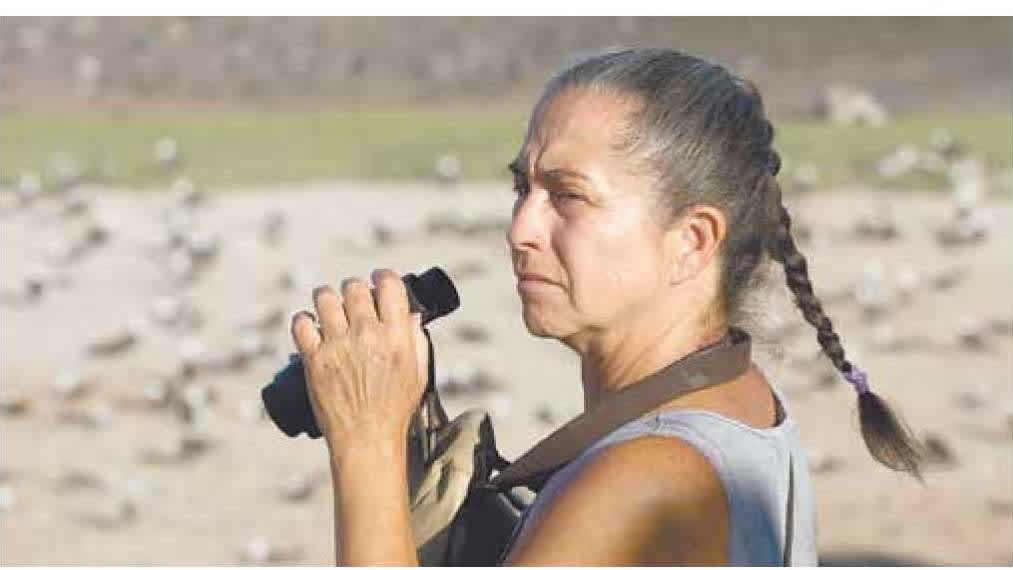
When considering the causes of climate change, the generation of energy from fossil fuels is among the worst sources of the biggest contaminants. And in terms of the consequences of this phenomenon, there's no better laboratory in which to see the impacts of global warming than at Isla Rasa in Baja California, nor better academic studies than those conducted there by María Enriqueta Velarde González.
Volkswagen of Mexico's program “For the Love of the Planet” recognized the efforts of Dr. Velarde at Isla Rasa and other islands when they awarded her the Prize for Scientific Investigation in Biological Conservation, announced January 24, 2011.
Velarde, from the University of Veracruz, and Exequiel Ezcurra, from the University of California, established at Isla Rasa that as the surface waters warm, sardines (the principal food source for the island's birds) move to colder and deeper waters, making them unavailable to the birds. Consequently, the birds can't feed their chicks and the chicks die. This dynamic also affects the sardine industry, an important source of income for Northeast Mexico.
Velarde, from the Institute of Marine Sciences and Fisheries, didn't just document and analyze, but also acted to rescue the threatened species.
“In addition to her scientific work, Velarde has had the vision and the ability to discourage egg poachers, completely halting illegal egg trafficking and nest destruction of the Elegant Terns and Heermann's Gulls,” according to a laudatory press release from the University of Veracruz.
The prize includes an award of US$42,000 and the recognition on behalf of Volkswagen of Mexico, which itself was awarded “Best Socially Responsible Practices for a Business” in the environmental protection category for its management of the awards program.
The nesting of 95% of the world's populations of Heermann's Gulls and Elegant Terns plummeted in 2009 due to temperature changes associated with the El Niño phenomenon in the waters off Isla Rasa, according to Velarde.
This was a huge loss, as pointed out by the program's panel of judges: “at the beginning of the 1970s the gull and tern populations amounted to a few tens of thousands . . . but as a result of Dr. Velarde’s work, the number of birds that nest there each year approaches half a million, and their density is so high they've begun to nest on nearby islands.”
In spite of the challenges, the scientist never loses heart. The panel noted: “Her outstanding dedication and successful scientific research places her on a par with the world's most extraordinary conservationists, such as Jane Goodall or Diane Fossey.”
“Her example has inspired conservation efforts on all the islands of the Mexican Pacific and is a global example of ecological conservation.”
The waters of the Gulf of California are among the most productive in the world and have immense importance for marine birds. Isla Rasa is one of the smallest islands but the most densely populated with birds. It’s the preferred nesting site for the Heermanns' Gull (Larus hermanni) and the Elegant Tern (Sterna elegans) and nearly the entire world's population of these birds gathers here every year.
For over 30 years, Velarde has visited the island every spring to measure, weigh, count, tag, and observe the marine birds. Year after year she has collected valuable information regarding survival of the tagged birds, their reproductive success, the details of their diet and patterns of behavior.


Dr. Velarde is a researcher at the Institute of Marine Science and Fisheries and has been studying the island for 30 years.
(Photo: Ernesto Bolado Martínez)
This work has created one of the world's most comprehensive and detailed databases of nesting marine birds. Her research has been published on the front page of newspapers and in first-rate scientific journals, and has contributed to the worldwide fame of these great islands, recognized as a World Heritage site by UNESCO.
Furthermore, she works closely with the locals and fisherman of the area, especially with the Comcáac (or “Seri”) community on the Sonoran coast. For more than 20 years she has involved other researchers in a training program for para-ecologists (non-professional ecologists) in the indigenous communities of Punta Chueca and Desemboque.
Thanks to this successful program, dozens of young Comcáac people have been trained and they participate and collaborate every year in Isla Rasa’s spring campaigns or actively work as field guides on Isla Tiburón.
In short, as the judges observed, “She has been able to redirect the destiny of an ecosystem condemned to decline to one of surprising recovery.”